Vibrating screens, a key piece of equipment that utilizes vibration energy to classify, screen, and remove impurities from materials, are widely used in a variety of fields, including mining, building materials, grain, chemicals, and environmental protection, thanks to their efficient separation capabilities and wide adaptability. A thorough understanding of their operating principles can maximize their performance, while a clear understanding of their intended use allows for precise selection based on actual needs. The following provides a comprehensive analysis of the working principles and uses of vibrating screens from three perspectives: the core mechanism of their operation, the differences in the principles of different vibrating screen types, and specific application scenarios.
Core Working Principle of Vibrating Screens
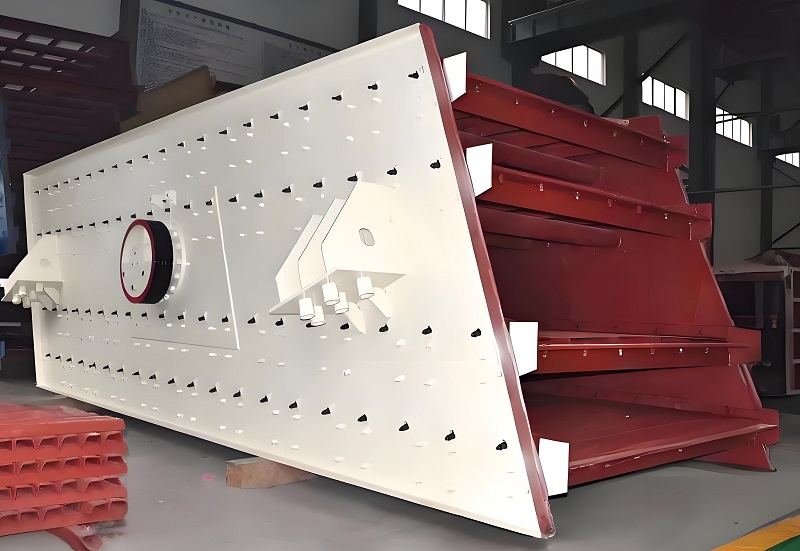
A vibrating screen essentially generates periodic vibrations through a vibration source, transferring vibration energy to the screen surface, causing the material on the screen surface to move periodically along with the surface. Simultaneously, the differences in particle size, density, and shape are exploited to achieve relative motion between the material and the screen surface. Ultimately, material smaller than the screen aperture (undersize) passes through the screen apertures, while material larger than the screen aperture (oversize) is discharged along the screen surface, achieving the purpose of classification or screening. Its operating principle can be broken down into three key components: the vibration source driving mechanism, the movement patterns of the material on the screen surface, and the core logic of classification and separation.
1. Vibration Source Drive Mechanism
The vibration source is the core component that generates vibration in a vibrating screen. Currently, the mainstream vibration sources are categorized as motor-driven eccentric block vibration sources, electromagnetic vibration sources, and hydraulic vibration sources. The driving methods of different vibration sources determine the vibration frequency, amplitude, and direction of the vibrating screen, as follows:
Motor-driven eccentric block vibration sources
This is the most widely used vibration source. It typically uses two asynchronous motors (or a dual-axis vibration motor) to drive the eccentric block to generate vibration. When the motors are started, the eccentric block rotates in a circular motion around the motor shaft, generating centrifugal force (the magnitude of which is proportional to the mass of the eccentric block, the rotation radius, and the square of the rotational speed). This centrifugal force is converted into a periodic excitation force, driving the screen box in reciprocating vibration. By adjusting the mass or relative angle of the eccentric block, the magnitude of the excitation force and the vibration direction (e.g., linear, elliptical, or circular) can be varied to suit the screening needs of different materials. For example, a linear vibrating screen uses two motors rotating synchronously in opposite directions, causing the screen box to vibrate in a linear reciprocating motion. This is suitable for rapid grading of granular materials. A circular vibrating screen uses a single vibrating motor to rotate an eccentric block, causing the screen box to vibrate in a circular motion. This is suitable for coarse screening of bulk materials.
Electromagnetic Vibration Source
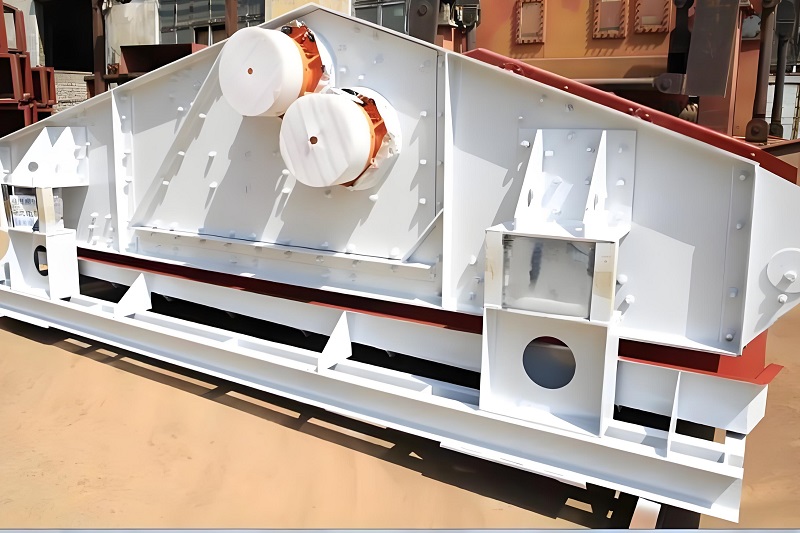
An electromagnetic vibration source uses the principle of electromagnetic induction to generate vibration. It primarily consists of an electromagnet, an armature, and a spring plate. When an alternating current flows through the electromagnet, it generates a periodically varying electromagnetic attraction, which draws the armature in an up-and-down reciprocating motion. The armature connects to the screen box, driving the screen box to vibrate. The spring plate acts as a reset point, ensuring that the armature quickly returns to its initial position when the electromagnetic attraction disappears. The advantages of this type of vibration source are that the vibration frequency can be precisely controlled by adjusting the current frequency (typically 50-100Hz). The amplitude is small (0.1-1mm), making it suitable for fine screening of fine-grained materials (such as flour and cement powder). However, the low excitation force makes it unsuitable for large vibrating screens or applications with high processing volumes. Hydraulic Vibration Source
A hydraulic vibrator uses a hydraulic pump to deliver hydraulic oil to a hydraulic cylinder. The hydraulic oil pressure drives a piston in reciprocating motion, which in turn drives the screen box to vibrate. Its characteristics include high excitation force and a wide adjustable amplitude range (1-10mm), making it suitable for high-load, high-throughput screening needs (such as screening large ore in mines). Its smooth vibration and low noise levels are beneficial, but its complex structure and high maintenance costs make it primarily used in large industrial vibrating screens.
2. Material Movement Patterns on the Screen Surface
After entering the vibrating screen, the material exhibits a specific movement trajectory due to the vibration of the screen surface. This movement trajectory directly affects screening efficiency and is primarily determined by the matching of three parameters: vibration direction angle, amplitude, and frequency.
Vibration direction angle: This refers to the angle between the vibration direction and the screen surface, typically ranging from 30° to 60°. When the vibration direction angle is small (30°-40°), the material advances slowly along the screen surface, resulting in a longer residence time, making it suitable for fully screening fine particles. When the vibration direction angle is large (50°-60°), the material advances quickly, with a high throughput, making it suitable for rapidly classifying coarse particles.
Amplitude and frequency: The amplitude is the maximum distance the screen surface deviates from its equilibrium position, while the frequency is the number of vibrations per unit time. For larger, denser materials (such as ore), a larger amplitude (3-8mm) and a lower frequency (800-1200 vibrations/minute) are required to overcome the material's gravity and ensure sufficient agitation. For smaller, less dense materials (such as flour and laundry detergent), a smaller amplitude (1-3mm) and a higher frequency (1500-3000 vibrations/minute) are required to prevent material agglomeration and ensure smooth passage of fine particles through the screen apertures.
Taking a common linear vibrating screen as an example, after material enters the screen surface from the feed inlet, it is subjected to linear reciprocating vibrations, causing it to bounce forward along the screen surface while simultaneously settling downward under the influence of gravity. During this process, particles smaller than the screen apertures continuously pass through the apertures and fall into the lower screen surface (or receiving hopper), while particles larger than the apertures continue to move forward along the screen surface and are ultimately discharged from the oversize outlet at the tail of the screen, thereby classifying materials of varying particle sizes.
3. Core Logic of Grading Separation
The core of grading separation in a vibrating screen is a combination of "probabilistic screening" and "forced screening." For materials with particle sizes close to the screen apertures (critical particles), gravity alone is insufficient to allow them to pass quickly through the apertures. In these cases, the vibration of the screen surface exerts a "forced push" on the material: firstly, the vibration creates relative friction between the screen surface and the material, causing the particles to rotate and flip, positioning different sides of the particles toward the screen apertures, increasing their probability of passing through. Secondly, the impact force generated by the vibration breaks up material agglomerates (such as lumps in moist material), exposing trapped fine particles and allowing them to pass through the apertures. The screen surface is typically designed with an inclined angle (typically 5°-20°). This tilted screen surface, combined with vibration, can further accelerate the material's forward motion, prevent material accumulation on the screen surface, and improve screening efficiency.
Main Uses and Industry Applications of Vibrating Screens
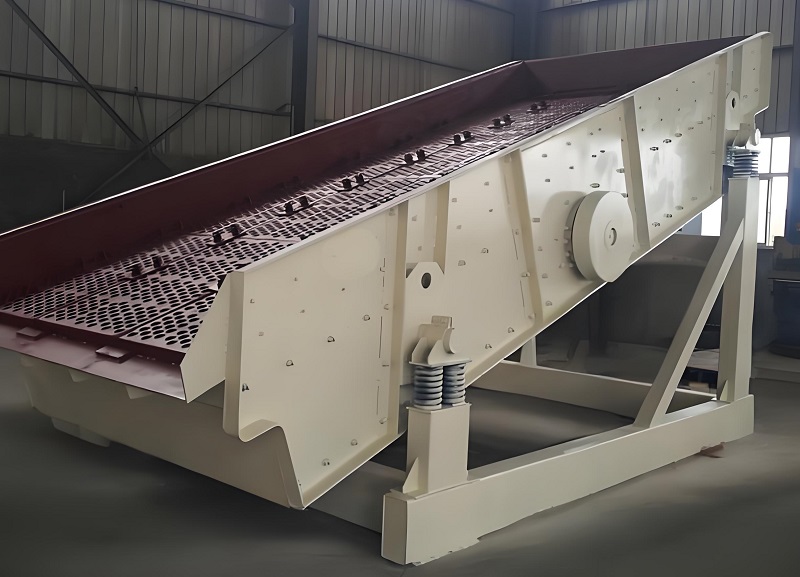
The uses of vibrating screens revolve around four core functions: material classification, impurity removal, dehydration, and media removal. Different industries select the appropriate vibrating screen type based on material characteristics and production requirements. Specific application scenarios are as follows:
1. Mining and Metallurgy: Coarse Screening, Classification, and Media Removal
In the mining and metallurgical industries, vibrating screens are key equipment in the ore processing process, primarily used for coarse screening, classification, and media removal (removing media powder from the ore surface). Specific uses include:
Ore Coarse Screening and Pre-Separation
Ore extracted from mines often contains impurities such as large rocks and soil, requiring coarse screening with vibrating screens. Circular vibrating screens (with their high amplitude and high processing capacity) are commonly used to screen out large impurities (diameter greater than 50mm) from the raw ore, preventing them from entering the subsequent crushing equipment and causing blockage or damage. For example, in coal mining, after the raw coal passes through a circular vibrating screen, large gangue is separated, and the smaller pieces of raw coal enter the crusher for further crushing, thereby improving crushing efficiency.
Post-Crushing Ore Classification
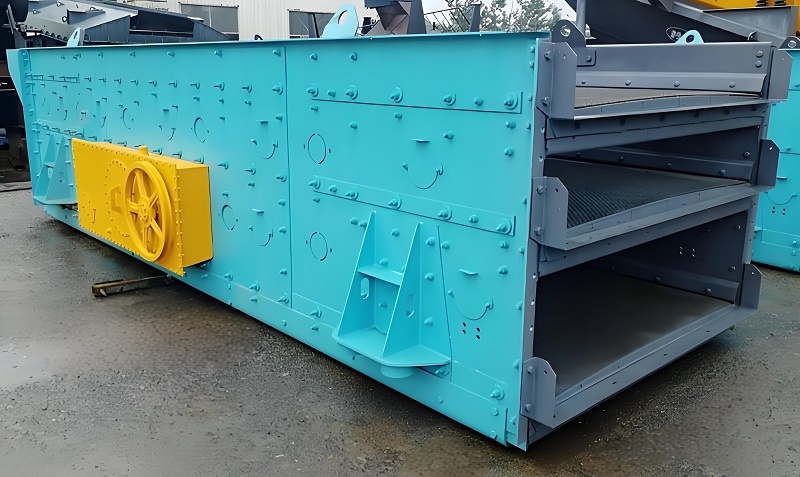
After crushing, the ore needs to be graded by particle size to facilitate processing steps (such as grinding and flotation). Linear vibrating screens or multi-layer vibrating screens (with 2-4 screen decks) are often used to separate the crushed ore into multiple particle size grades. For example, in iron ore processing, the crushed ore passes through three linear vibrating screens, which screen out particles larger than 10mm (returned to the crusher for secondary crushing), 5-10mm (entering the coarse grinding equipment), and smaller than 5mm (entering the fine grinding equipment). This allows for precise classification and optimizes subsequent processing. Mineral Demediation and Dehydration
During heavy media separation, medium fines (such as magnetite fines) adhere to the ore surface and need to be removed by vibrating screens. Furthermore, the washed ore contains a high amount of moisture and also requires dehydration by vibrating screens. High-frequency vibrating screens (vibrating at 1500-3000 vibrations per minute) are often used in these situations. High-frequency vibrations quickly remove medium fines and moisture from the ore surface and prevent clogging of the screen surface. For example, in copper beneficiation, copper ore after heavy media separation is removed by high-frequency vibrating screens. The recovered medium fines can be recycled, reducing production costs. Coal after washing is dehydrated by vibrating screens, reducing the moisture content from 20% to below 10%, making it easier to store and transport.
2. Building Materials Industry: Raw Material Screening and Product Grading
In the building materials industry (such as cement, sand and gravel, and ceramics), vibrating screens are primarily used for raw material screening and product grading to ensure raw material purity and product quality. Specific applications include:
Sand and gravel aggregate grading
Sand and gravel aggregates are core raw materials for concrete and building mortar and must be graded by particle size (e.g., 0-5mm fine sand, 5-10mm medium sand, 10-20mm coarse sand). Multi-layer linear vibrating screens are typically used to separate the crushed sand and gravel by particle size to meet the requirements of different construction scenarios. For example, in high-speed rail construction, the particle size distribution of sand and gravel used in concrete must be strictly controlled. Graded sand and gravel through three layers of vibrating screens ensures that the concrete's strength and fluidity meet standards.
Cement Raw Material Removal and Grading
In cement production, raw materials such as limestone and clay must be freed of impurities (such as tree roots and rocks) and graded by particle size before entering the homogenization silo. Electromagnetic vibrating screens (with fine amplitude and high frequency) can effectively filter out fine particles from the raw materials, removing impurities that could affect the chemical composition and strength of the cement. In addition, finished cement products must be screened through vibrating screens to remove agglomerated cement clumps and ensure that the cement fineness meets national standards (for example, the fineness of 42.5-grade cement must be controlled to ≤10% on an 80μm square-hole sieve).
Ceramic Raw Material Screening
Ceramic raw materials (such as kaolin and feldspar powder) require fine screening to remove coarse particles and impurities and ensure uniform raw material fineness. High-frequency vibrating screens or ultrasonic vibrating screens (which combine high-frequency vibration with ultrasonic waves to further prevent sieve clogging) can filter out fine powders with a particle size of less than 100 mesh, preventing coarse particles from affecting the molding quality and firing of ceramic bodies.
3. Grain and Food Industry: Impurity Removal, Grading, and Selection
In the grain and food industry, vibrating screens are primarily used for impurity removal, product grading, and selection to ensure food safety and product quality. Specific applications include:
Grain Raw Material Impurity Removal
Harvested grains such as wheat, rice, and corn often contain weeds, stones, dirt, and other impurities, which need to be removed through vibrating screens. A double-deck vibrating screen is used. The upper screen (with larger mesh size) removes large impurities such as weeds and stones, while the lower screen (with smaller mesh size) removes smaller impurities such as soil and fine sand. Grain particles are simultaneously discharged between the two screens, achieving impurity removal and purification. For example, in flour processing, wheat can be filtered through a vibrating screen to reduce the impurity content to below 0.5%, preventing impurities from affecting the flour's taste and hygiene.
Grain Grain Grading and Selection
Grain particles of different particle sizes have different qualities and require vibrating screens to increase product value. For example, in rice processing, a vibrating screen separates rice into whole rice and broken rice (large and small broken rice). Whole rice is sold as a high-quality product, while broken rice can be used to make rice flour, rice wine, and other products. In soybean processing, a vibrating screen selects plump soybeans for oil extraction and unfilled soybeans for soy products, improving raw material utilization.
Food Processing Screening
In food processing, vibrating screens are used for fine product screening and impurity removal, ensuring uniform particle size and the absence of impurities. For example, in biscuit production, flour is screened through a vibrating screen to remove lumps and impurities, ensuring a uniform dough texture. In candy production, sugar granules are graded through a vibrating screen to ensure consistent granule size and enhance product appearance. In tea processing, vibrating screens are used to select different grades of tea (such as premium tea and first-grade tea), and the tea leaves are graded based on size and shape to meet varying consumer needs.
4. Chemical and Environmental Protection Industries: Material Purification and Solid Waste Treatment
In the chemical and environmental protection industries, vibrating screens are primarily used for material purification, solid-liquid separation, and solid waste treatment. Specific applications include:
Chemical Raw Material Purification and Grading
In chemical production, powdered raw materials (such as plastic granules, fertilizers, and pigments) are screened through a vibrating screen to remove coarse particles and impurities, ensuring purity and uniform particle size. For example, in plastic granulation production, vibrating screens are used to select plastic granules of uniform size to prevent coarse particles from affecting injection molding quality. In fertilizer production, products such as urea and compound fertilizers are graded through a vibrating screen to remove lumps and ensure that the product particle size meets agricultural fertilization requirements (e.g., granule diameter 2-4mm). Solid-Liquid Separation and Dehydration
In chemical wastewater and environmental wastewater treatment, vibrating screens are used for solid-liquid separation, removing solid particles from wastewater. For example, in electroplating wastewater treatment, vibrating screens (combined with filters) filter out metal debris and impurities from wastewater, reducing the load on subsequent treatment stages. In municipal wastewater treatment, activated sludge is dehydrated using vibrating screens, reducing the sludge moisture content from over 90% to below 70%, facilitating subsequent disposal (such as landfill or incineration).
Solid Waste Recycling and Sorting
In environmental solid waste treatment, vibrating screens are used for waste sorting and resource recovery. For example, in domestic waste treatment, vibrating screens separate waste into coarse materials (such as plastic bottles and cans) and fine materials (such as kitchen waste and dust). The coarse materials can be further sorted and recycled (e.g., for plastics and metals), while the fine materials can be landfilled or incinerated. In industrial solid waste treatment (such as construction waste), vibrating screens separate sand and gravel aggregates, enabling resource recycling and reducing solid waste emissions.
Vibrating Screen Selection and Usage Considerations
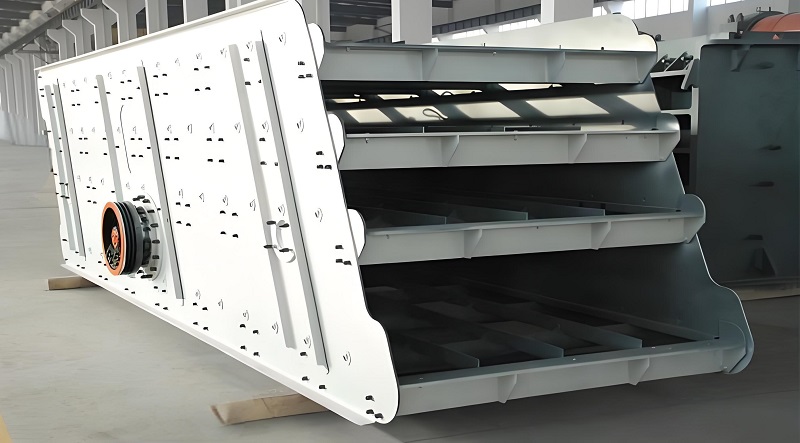
1. Key Selection Factors
When selecting a vibrating screen based on the intended use, consider three key factors: material properties (particle size, density, moisture content, viscosity), processing capacity, and classification accuracy:
For materials with high moisture content and viscosity (such as sludge and organic fertilizer): Choose a high-frequency vibrating screen or an ultrasonic vibrating screen to prevent clogging of the screen openings.
For materials with large processing capacity and coarse particle size (such as raw ore from mines): Choose a circular vibrating screen or a large linear vibrating screen.
For materials with high classification accuracy and fine particle size (such as flour and ceramic powder): Choose an electromagnetic vibrating screen or an ultrasonic vibrating screen.
2. Usage Precautions
Pre-startup Inspection: Check the vibration source, bearings, and screen surface for proper function, ensuring there are no looseness or unusual noises.
Use Uniform Feeding: Avoid sudden increases in feed volume, which can cause material accumulation on the screen surface and affect screening efficiency.
Regular Maintenance: Regularly lubricate the bearings (using lithium-based grease), clean impurities from the screen surface, and inspect the screen for damage to ensure stable operation.
With its flexible vibration mechanism and efficient separation capabilities, vibrating screens have become an indispensable piece of equipment in production processes across various industries. Its operating principle revolves around vibration source drive, material movement patterns, and classification logic. Different types of vibrating screens adapt to the screening needs of different materials by adjusting vibration parameters. Its applications span a wide range of fields, including mining, building materials, grain, chemicals, and environmental protection. From raw material removal to product classification, from solid-liquid separation to resource recovery, it provides important support for industrial production and environmental protection. In practical applications, it's necessary to combine material characteristics with production requirements, select the right model, and use it in a standardized manner to fully utilize the vibrating screen's performance and improve production efficiency and product quality.
Save Time! Get A Detailed Quotation Quickly.
